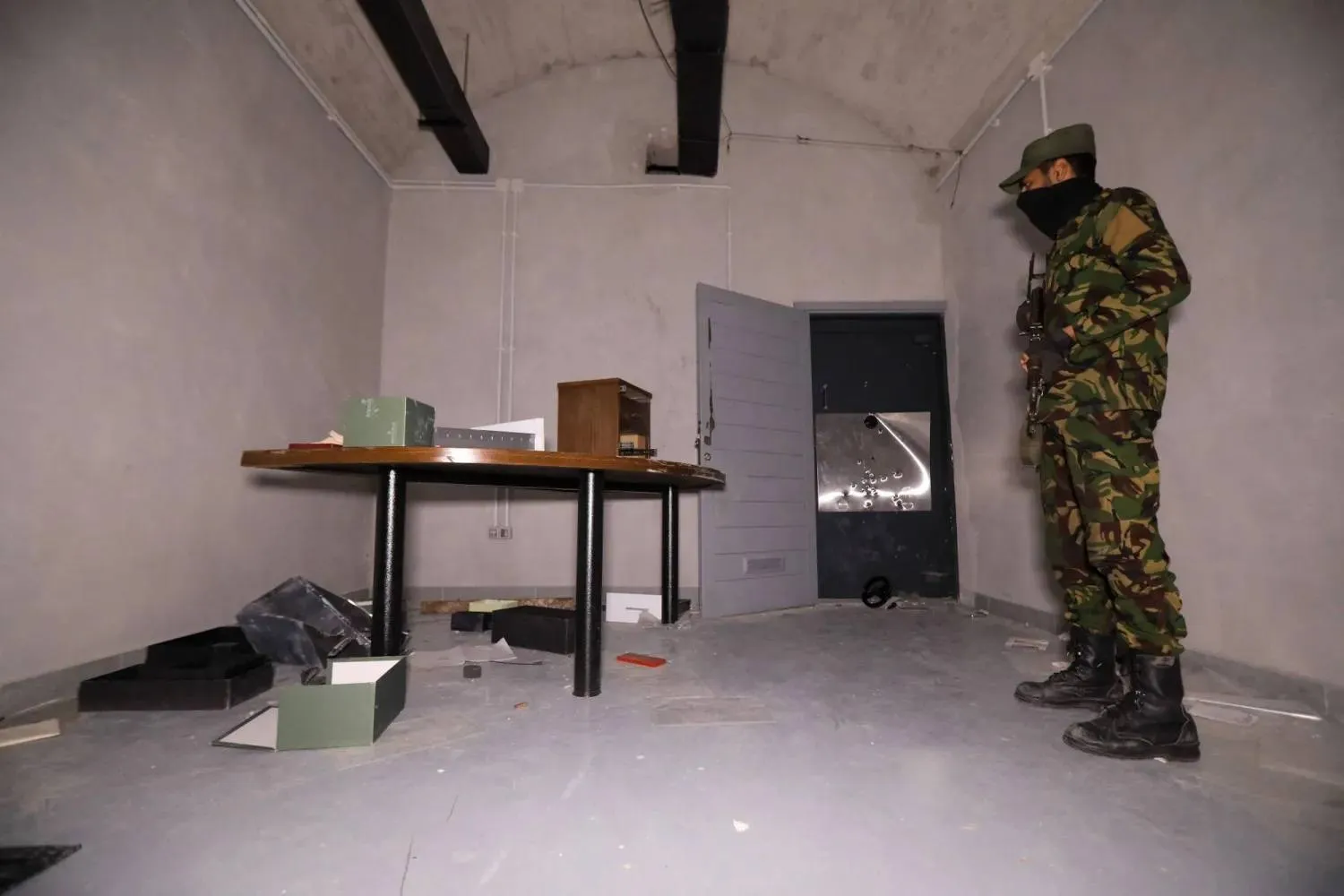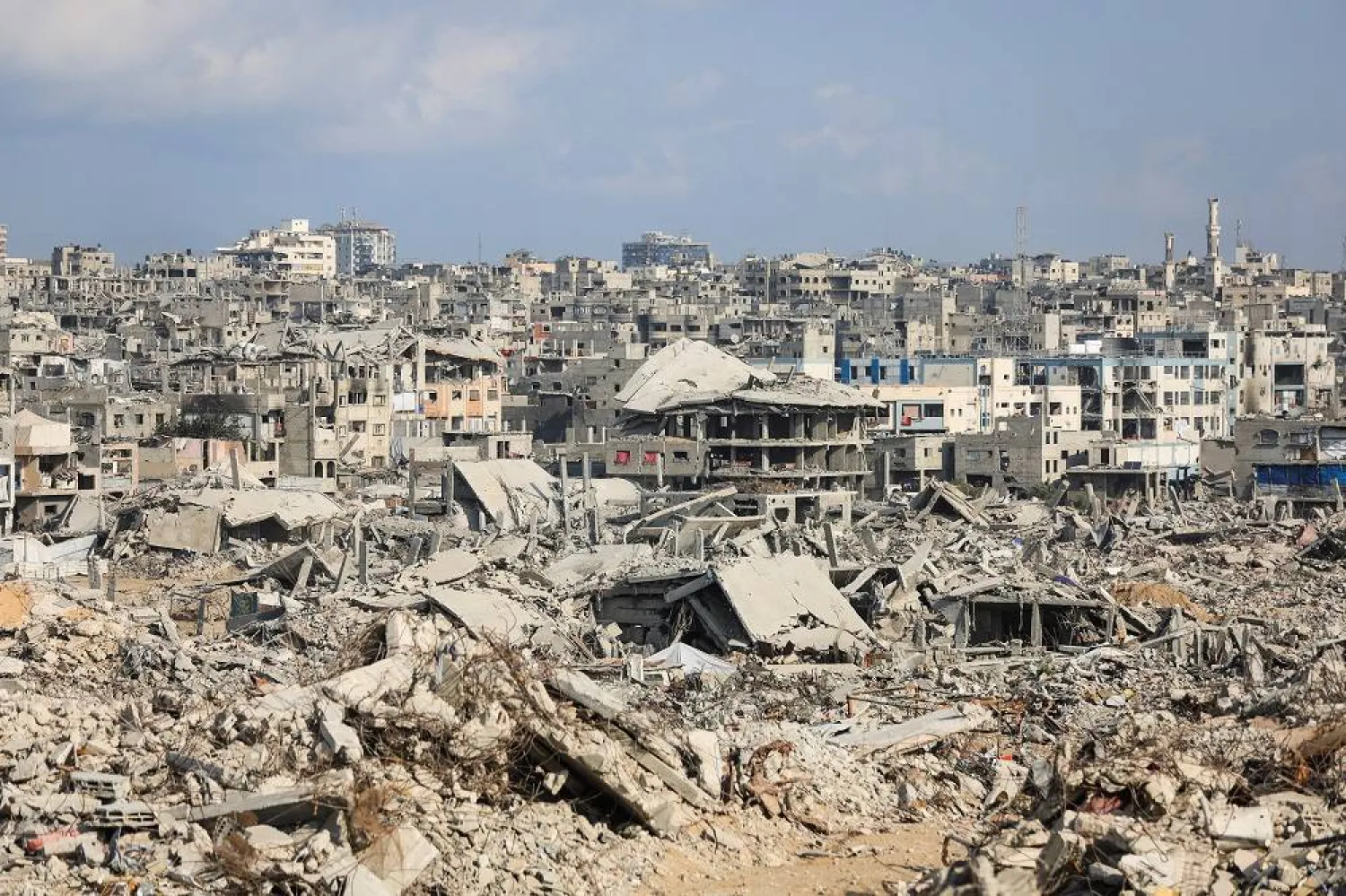In the first series of reports on the third Saudi expansion of the Grand Mosque in the holy city of Makkah, Asharq Al-Awsat delved into the development of the subject with the issuance of the royal decree to form a team of experts comprised of Saudi university professors and other global specialists.
This initiative was undertaken to scrutinize the proposed expansion project in the year 2008.
Furthermore, Saudi Arabia’s Ministry of Higher Education established the aforementioned team, in accordance with the royal decree, tasked with assessing the state of the Grand Mosque during that period.
This assessment encompassed comprehensive studies and on-site surveys.
Additionally, the team undertook the evaluation of the proposed design through a dual-layered review process – one conducted at the local level by the Ministry's team, and the other at the international level by a team from the firm AECOM.
However, there exists a tale narrating the technological vision of the Grand Mosque, developed by a team of professors and researchers from the Massachusetts Institute of Technology (MIT).
In addition, prominent architects, global consulting firms, and select Saudi universities and institutions took part in formulating architectural concepts and design approaches for the expansion.
They also presented forward-looking perspectives for the future of the Grand Mosque.
In this investigation, Asharq Al-Awsat continues to shed further light on various architectural and design aspects, as well as future visions presented by firms and universities.
The article explores how some of these ideas were harnessed in the development of the chosen design under the royal decrees. Moreover, it delves into the features of the technological systems put forth by MIT.
Despite being allotted just a short span of two months, the architectural innovators, global firms, and local organizations, who were called upon to present their proposals, delivered a diverse range of visionary concepts.
Among them were preliminary ideas and sophisticated architectural approaches, all of which engaged with key aspects of the expansion project.
Subsequently, some of these ideas and approaches were incorporated into the design development, a point we will delve into further.
They, however, shared numerous factors that included enhancing the unobstructed visual access to the holy Kaaba from all directions, expanding the prayer areas while considering an increase in their capacity, and enlarging the Mataf (circumambulation area around the Kaaba) and the Sa’i (the ritual walk between the hills of Safa and Marwah).
The expansion featured a specialized avenue for presenting forward-looking perspectives, with the intention of formulating comprehensive and optimal solutions for the long-term development of the Grand Mosque.
These perspectives were developed with an unconstrained urban approach, aimed at discovering positive impacts in the holistic consideration of the Grand Mosque’s evolving needs for enhancements and extensions, leading to ideal future-oriented solutions.
Seven distinguished global architects, alongside King Saud University, contributed their proposed visions, which revolved around a holistic vision for Makkah’s broader development.
To emphasize the scale of the endeavor by the technical teams, we will highlight the key aspects of the cutting-edge technological vision put forth by a team of over ten professors from MIT.
Their research encompassed the presentation of pertinent and implementable technological systems for the expansion project of the Grand Mosque.
Following the exhaustive efforts of the technical team during the project’s initial phase, involving meticulous and comprehensive studies, conceptualizations, architectural and urban visions, as well as artistic and technological considerations, the outcomes were presented for review to King Abdullah.
The proposal by King Saud University emerged as the most suitable option. Subsequently, on February 21, 2009, Royal Directive No. 1692 was issued, stipulating “the proposed design by King Saud University for the expansion of the Custodian of the Two Holy Mosques, King Abdullah bin Abdulaziz Al Saud, for the Grand Mosque shall serve as the foundational blueprint for initiating the design process.”
“This selection is attributed to its alignment with the existing state of the Grand Mosque... with the understanding that it will undergo further development to align with the developmental, design, and operational visions of the study team, and may subsequently be adopted and executed by the Saudi Binladin Group.”
With that, the first phase of the team’s work on the project was successfully concluded, culminating in the issuance of the aforementioned royal decree.
It is imperative at this juncture to emphasize the team’s relentless effort and dedication to achieving the desired outcomes through a collaborative and integrated approach, executed with the utmost professionalism and in accordance with defined methodologies and frameworks.
The term “team,” which has been referred to by various names in different documents and reports such as “Study Team,” “Core Team,” “Ministry Team,” or “University Team” encompasses all committees and working groups operating under the purview of the Ministry of Higher Education.
Why was the design proposed by King Saud University chosen?
According to Dr. Abdulaziz bin Saad Al-Muqrin, former Dean of the College of Architecture and Planning at King Saud University, during the presentation to King Abdullah at the College of Marine Sciences in Jeddah, architectural and future visions were showcased by both global and local consulting firms as well as other colleges.
It was scheduled that each design proposal by the involved team would be summarized in 3-5 minutes.
However, the proposal presented by King Saud University extended to over 20 minutes.
This was due to King Abdullah taking the time to listen to the detailed explanations of the university’s proposal, which was presented by Dr. Abdullah Al-Othman, the university's director.
The detailed presentation highlighted the merits of the proposed design from various perspectives.
The prolonged duration of the review may have been a testament to the emphasis placed on the design's ability to preserve the identity of the Grand Mosque and its integration with past expansions, potentially more so than other designs.
The university reinforced this by presenting its vision for future expansions, illustrating the possibility of continuing future expansions along the same trajectory.
Furthermore, the university’s representatives engaged in discussions with the technical team and subsequently with relevant authorities regarding the nomination of the university’s design idea.
It was considered the most suitable option due to its alignment with previous expansions and its potential for expedited implementation.
A committee comprising the Ministry of Higher Education, the General Presidency for the Affairs of the Two Holy Mosques, and the Saudi Binladin Group was established to formulate recommendations.
The proposed urban and architectural concept from King Saud University was rooted in the notion that the Grand Mosque is not solely a place of prayer, but fundamentally encompasses the Mataf and the Sa’i.
Along with the paramount role of prayer, it is these acts of Tawaf and Sa’i that distinguish this mosque from others, including the Prophet’s Mosque.
Furthermore, it was essential to strike a balance between these core functions while alleviating operational burdens. This entailed elevating safety, security, and spirituality for visitors to the Grand Mosque, and ensuring the sustainability of the mosque as a mega facility. The proposed design approach can be summarized as follows:
The expansion would consist of three separate, somewhat distinct building blocks, each with three levels – ground, first, second, and rooftop – that are interconnected on upper floors. This configuration offers a high degree of operational flexibility based on different occasions and ensures effective crowd management and safety measures.
Integrated within the sides of these blocks are facilities catering to worshippers and prayer, strategically positioned to reduce movement between prayer areas and service zones. Courtyards are interspersed within these blocks to infuse natural light across all levels of the expansion.









